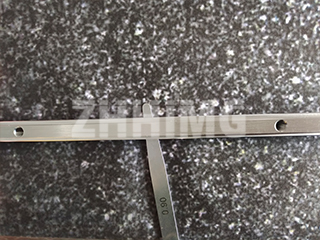Drilling into a standard granite surface plate requires proper tools and techniques to ensure precision and avoid damaging the work surface. Here are the recommended methods:
Method 1 – Using an Electric Hammer
Start the drilling process slowly with an electric hammer, similar to drilling into concrete. For larger openings, use a special core hole saw. If cutting is required, a marble cutting machine equipped with a diamond saw blade is recommended. For surface grinding or finishing, an angle grinder can be used.
Method 2 – Using a Diamond Drill
When drilling holes in granite, a diamond-tipped drill bit is the preferred choice for its hardness and precision.
-
For holes with a diameter below 50 mm, a handheld diamond drill is sufficient.
-
For larger holes, use a bench-mounted diamond drilling machine to achieve cleaner cuts and better accuracy.
Advantages of Granite Surface Plates
Granite surface plates offer several benefits over cast iron alternatives:
-
Rust-proof & non-magnetic – No corrosion and no magnetic interference.
-
Superior precision – Higher measurement accuracy and better wear resistance.
-
Dimensional stability – No deformation, suitable for various environments.
-
Smooth operation – Measurement movements are stable without sticking or drag.
-
Damage tolerance – Minor scratches or dents on the surface do not affect measurement accuracy.
These properties make granite surface plates an exceptional choice for industrial metrology, precision machining, and laboratory testing.
Post time: Aug-15-2025

